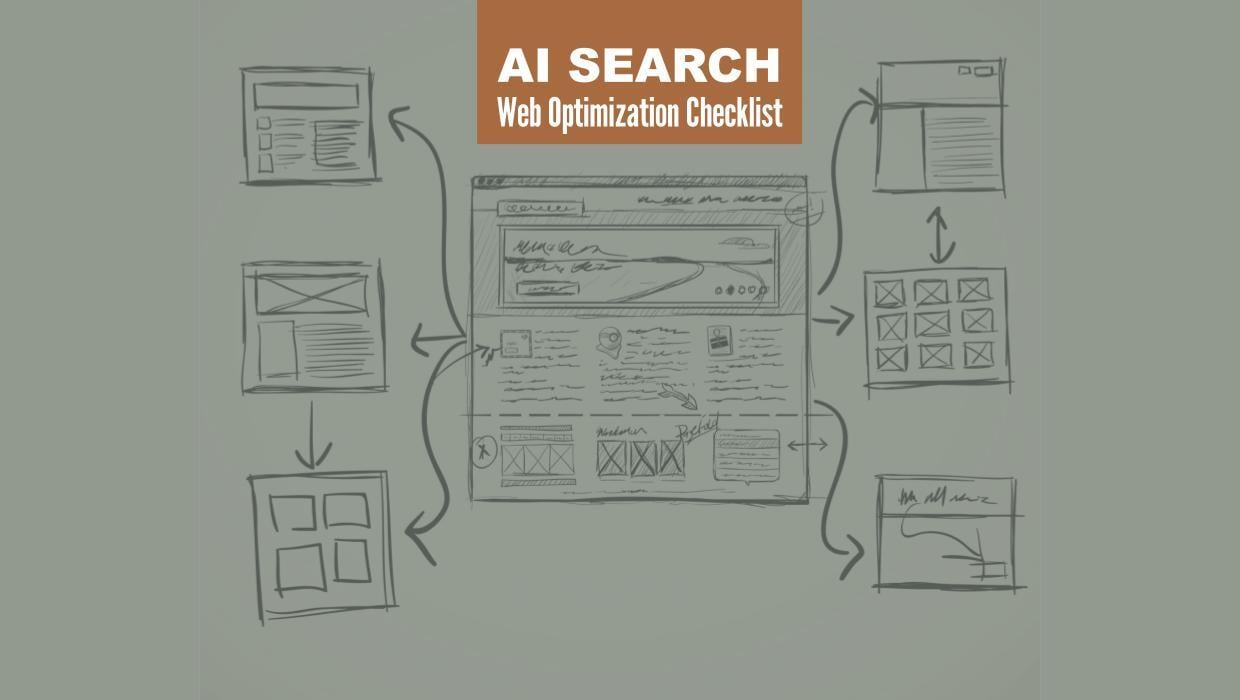How Google Chrome Ending Third-Party Cookies Impacts B2B Marketing
Written by
In 2013, internet browsers Safari and Firefox initiated third-party cookie blocking in an effort to protect users from information oversharing.1 The move positioned Google Chrome as the emerging browser powerhouse, a status that it maintains today with 64.73% of the global web browser market.2
And that’s the thing about powerhouses. They aren’t compelled to be a “me too” in third-party cookies going away. Google Chrome started and delayed action plans since 2020 not (only) because they can, but because they view the phase-out as an opportunity to develop and test APIs to address specific use cases and mitigate the no-cookie impact.
The long-awaited plan is finally in motion. Google Chrome has doled out third-party cookie restrictions to 1% of its users (about 30 million users) in Q1 of 2024, with a ramp up to 100% of users earmarked for Q3 2024.3
As the balance between user data privacy and marketing personalization hits a tipping point, there are speculative consequences for users — and for the 83% of marketers who rely on third-party cookie data to inform their marketing strategies.4
What does it mean when a website uses cookies?
Before jumping into the fray about third-party cookies, it’s important to answer a basic question: “How and why do websites use cookies?”
Cookies are small text files that websites create and store on users’ computers to aid in recognizing and tracking behaviors and preferences. Cookies are divided into two categories: first-party and third-party.
First-party cookies are created by the website when a user physically visits (also known as the host domain). These cookies are intended to improve and personalize the user experience by helping browsers “remember” key information such as user names, passwords, and language preferences. Since first-party cookies are deemed necessary and beneficial, web browser settings are typically set to allow them by default.
Third-party cookies are created by websites other than the one a user physically visits — usually advertisers, analytics providers, and retargeting and tracking services. The purpose of third-party cookies is to track users’ online behaviors and display targeted ads across websites most relevant to individual user preferences.
The General Data Protection Regulation (GDPR)
Since third-party cookies are attached to users’ devices for tracking purposes, users increasingly see them as an invasion of privacy. This brought about protective legislation surrounding the purpose and process behind how to enable cookies for a website.
Enacted in 2018, the General Data Protection Regulation (GDPR) is a data privacy law that gives citizens of European Union (EU) countries more control over how their personal data is collected and used.5 However, GDPR protections don’t stop at the EU borders. The global reach of online activity means nearly any website securing personal data from EU residents falls under GDPR enforcement with very limited exceptions, regardless of where the organization behind the website is geographically situated.
Non-compliance with GDPR means heavy fines, so “Do I need a cookie policy on my website?” is best answered yes. Plus, other countries like Brazil are following GDPR’s legislative lead with its Brazilian General Data Protection Law (aka LGPD).6
Unlike the EU and Brazil, the United States has no uniform data privacy protections in place. In place of federal legislation, individual states can choose to enforce policy. To date, the majority of states have introduced, signed, or put partial data privacy laws into effect.
Only 5 states have dedicated laws in place. California is considered the pioneer, introducing the California Consumer Privacy Act (CCPA) of 2018 followed more recently by Colorado, Utah, Virginia, and Connecticut.7
Giving the people what they want — and don’t want
Movement toward stricter privacy protections in answer to user demand quells some concern, but it’s also causing pushback.
Privacy seems to give way to the desire for personalization. Overall, 80% of users are willing to share personal information to get deals — and those offers better be personalized since 71% of users expect personalization and 76% get frustrated if it's absent.8,9
And that frames the challenge for inbound marketers:
As the world’s largest internet browser does away with third-party cookies to give 65% of users what they allegedly want in terms of privacy, how do marketers provide targeted ads that users also claim to want?10
The way the cookie crumbles
Understandably, the 75% of marketers that rely on third-party cookies for targeted personalization — and the 40% higher revenue potential it generates — are in a bit of a panic.8,11 After all, data powers the digital experience.
Not being able to leverage third-party cookies to track or target users for the projected 8 hours per day they spend in the digital space likely has a negative business impact. Marketers will arguably find it more difficult to:
- Reach people who are interested in and/or loyal to their brand
- Deliver relevant ads to users
- Optimize conversions, which ultimately increases acquisition costs
- Accurately capture marketing campaign data and KPIs
However, the anticipated Google third-party cookie phase-out may not be all gloom and doom for marketers. It’s important to keep in mind that Google isn’t eliminating all cookies. First-party cookies remain in place and offer businesses primary data for lead generation and relationship building.1
Also, Google isn’t placing a hard stop on tracking user behavior. It will, however, shift focus from the granular, individualized data mining of third-party cookies to tracking groups of people and aggregate data using privacy-first and interest-based marketing technologies like Privacy Sandbox and Federated Learning of Cohorts (FLoC).3
As a result of the use of aggregate data, inbound marketers have an opportunity to deploy traditional outbound tactics to maximize their online presence.
Putting contextual marketing in context
A cookieless digital space doesn’t mark the return of aimless online advertising or the demise of your strategic, SEO-driven B2B inbound marketing. Rather, cookieless marketing strategies are bubbling up to fill the void and power contextual marketing, including:
- Contextual targeting helps marketers personalize ads based on analysis of content users consume (text, video, and audio) and their online experience instead of specific behaviors and data11
- Browser APIs like those developed by Google Chrome track interests based on browsing activities over a given period (e.g., three weeks). That data then informs ad personalization without permanent data storage11
- Identity graphs use AI to group users into profiles that, in turn, marketers can use for targeting without infringing on personal data. Early estimates suggest identity graphs could increase marketable IP addresses upwards of 54%11
While not necessarily delivering a one-on-one digital experience, contextual marketing puts key messaging in front of people whose behaviors indicate interest in a particular product or category, if not a full-blown readiness to buy.
By way of practical application, let’s look at how two popular B2B platforms approach cookieless marketing.
Propensity, an account-based marketing (ABM) lead generation platform for small B2B growth teams, aggregates data based on web properties (website, ad, blog) and derives unique identifiers from IP addresses to profile companies, not individuals. Propensity gathers engagement metrics, not personal data.
Lead Forensics, the leading software in B2B website visitor identification, has never used cookies to collect personal data. Instead, the platform focuses on using business IP addresses to identify and categorize organizations and their movement through a website.
With contextual marketing comes a slew of other targeted “push” opportunities such as pay-per-click (PPC) ad campaigns, search engine ads, display ads on industry websites, and social media ads.
Learn how Weidert Group helped three manufacturers leverage the power of paid advertising to achieve three very different goals. Download B2B Paid Advertising Success Stories now.
SOURCES
1HubSpot, The Death of the Third-Party Cookie: What Marketers Need to Know About Google's 2022 Phase-Out, Undated
2Backlinko, Web Browser Market Share In 2024: 85+ Browser Usage Statistics, February 7, 2024
3Google (Developers), Prepare for the third-party cookie phaseout | Privacy Sandbox | Google for Developers, Undated
4Emodo, What Marketers Need to Know About the Death of Third-Party Cookies, January 19, 2023
5GDPR.EU, Does the GDPR apply to companies outside of the EU?, Undated
6iapp.org, Brazilian General Data Protection Law, amended by Law 13,583/2019
7Termly, US Data Privacy Laws Tracker: State-by-State Map [Jan 2024], January 2024
8Exploding Topics, 55+ Personalization Statistics (New 2024 Data), December 5, 2023
9McKinsey & Company, The value of getting personalization right—or wrong—is multiplying | McKinsey, November 12, 2021
10Cookieyes, Internet Cookie Statistics: Key Trends and Insights - CookieYes, February 9, 2024.
11Illumin, Do you know how to target in a post-cookie era? | illumin, February 8, 2024
12Exploding Topics, Alarming Average Screen Time Statistics (2024), December 4, 2023
Subscribe To Our Blog
Information. Insights. Ideas. Get notified every time a new Weidert Group blog article is published – subscribe now!
You May Also Like...

Search Engine Optimization
Optimize Your Industrial Website for AI Search

Marketing Technology
Why Unified Data Efforts Fail (and How Manufacturers Can Fix It)

Search Engine Optimization
How Falcon Rebuilt Industrial AI Search Visibility in 2025
Accelerate Your Growth with
Weidert Group
If you’re ready to explore a partnership, request a personalized consultation with our team.

